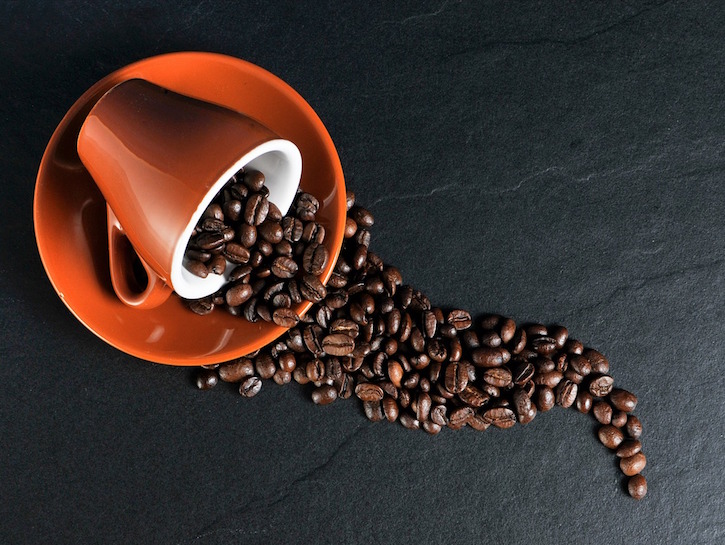If you’re completely helpless until you’ve had your first cup (or seven) of joe in the morning, you’re not alone. According to The Washington Post, the U.S. is the world’s biggest coffee consumer. Forty-eight percent of 18- to 24-year-olds and 64 percent of 25- to 60-year-olds drink coffee daily, the Post reports.
Coffee contains the largest caffeine content of any other natural drink, with an average cup of brewed coffee containing 70 to 140 milligrams of caffeine. However, the amount of caffeine varies depending on the drink.
What Affects Caffeine Content of Coffee?
The caffeine content is affected by the type of coffee bean and how the coffee is prepared. There are two types of coffee species: Arabica and Robusta. Robusta beans have 50 percent more caffeine than Arabica, but because of their incredibly bitter taste, Robusta beans are not as popular as Arabica. Therefore, about 75 to 80 percent of the world’s coffee is made with Arabica beans, according to The Atlantic.
What Is The Caffeine Content For Different Brewing Methods?
Brewed Coffee
An 8-ounce cup of brewed coffee contains anywhere between 70 and 140 milligrams of caffeine, averaging at 95 milligrams each cup.
Brewing coffee is the simplest and most common method of coffee preparation in the U.S., where hot water is poured over a filter containing coffee grounds. Also referred to as drip coffee, this is the type of easy-to-make brew your Keurig or Mr. Coffee pot produces.
Brewed coffees are classified as light, medium and dark roasts and are identified by color. Many people believe dark roast coffee contains a greater amount of caffeine because of its stronger, bolder flavor. However, this is just a myth — both light roasts and dark roasts have relatively the same amount of caffeine per cup.

Espresso
Each ounce of espresso contains about 63 milligrams of caffeine, so a double shot of espresso contains about 125 milligrams.
Espresso is made by forcing very hot water, under intense pressure, through finely ground coffee that has been compacted tightly together. This process makes espresso famous for its high volume of caffeine because the high-temperature water draws the caffeine out of the ground coffee at a stronger, faster rate — it only takes about 20 to 30 seconds to brew. The finely ground beans also allow the caffeine to be extracted at a higher quantity than regular brewed coffee. Most espresso is made with Robusta beans, which have 50 percent more caffeine than Arabica beans.
Espresso contains a higher concentration of caffeine, but because espresso is served in one-ounce shots, someone drinking a single espresso shot will end up with less caffeine than a drink brewed from a K-cup. Espresso is often the base for a number of different types of coffee drinks.

Valeria Aksakova/Shutterstock
Espresso-Based Drinks
Most of these drinks mix espresso shots with milk to make lattes, cappuccinos, americanos, macchiatos, etc. And because these drinks are made with espresso shots, they contain the same amount of caffeine as each ounce of espresso added — so, about 63 milligrams per shot.
Because of their caffeine content being completely shot-driven, these drinks have a wide range of overall caffeine concentration that are affected by size of the drink, amount of shots, etc. So if you find that your regular latte isn’t getting the job done, bump it up to a double or triple shot latte.

Decaf Coffee
Don’t be fooled — despite the name, decaffeinated coffee is not actually completely caffeine-free. The average cup of decaf contains 7 milligrams of caffeine. It’s not much, but the caffeine is still there. However, if you’re craving a cup of joe and don’t want the energy boost, this is definitely the way to go.

Instant Coffee
Much like the flavor, instant coffee contains less caffeine than brewed coffee. Each cup of instant coffee has about 30 to 90 milligrams of caffeine.
This type of coffee is made of brewed coffee that has been either freeze-dried or spray-dried. When added to hot water and stirred, it dissolves into “coffee…” because, come on, it isn’t real coffee. Almost all instant coffee is made with bitter Robusta beans as well, which might also have an impact on why many people believe it doesn’t taste as great as other coffees.

andy0man/Shutterstock
What about commercial brands?
However, some brewed coffee from commercial coffee shops, such as coffee sovereign Starbucks, contains more caffeine than the average brewed-at-home coffees. An 8 ounce brewed coffee from Starbucks contains 180 milligrams of caffeine, which is 40 milligrams more than the average homebrew. Similarly, Starbucks espresso shots contain 75 milligrams of caffeine, which is 12 milligrams more than average.
Dunkin Donuts, another popular destination for coffee connoisseurs, contains even greater quantities of caffeine. An 8 ounce brewed Dunkin coffee contains about 215 milligrams of caffeine. Their espresso shots are on par with Starbucks at 75 milligrams.

Can You Drink Too Much Caffeine?
The most common side effect from caffeine consumption is a negative effect on sleep — after all, caffeine masks feelings of drowsiness by making you feel awake and alert. However, if you drink too much caffeine you can experience overdose symptoms such as anxiety, jittering, sweating, insomnia, nausea, dizziness, heart palpitations, vomiting and even cardiac arrest. It is highly recommended that you do not exceed 400 milligrams of caffeine in a single day, according to the Mayo Clinic.
